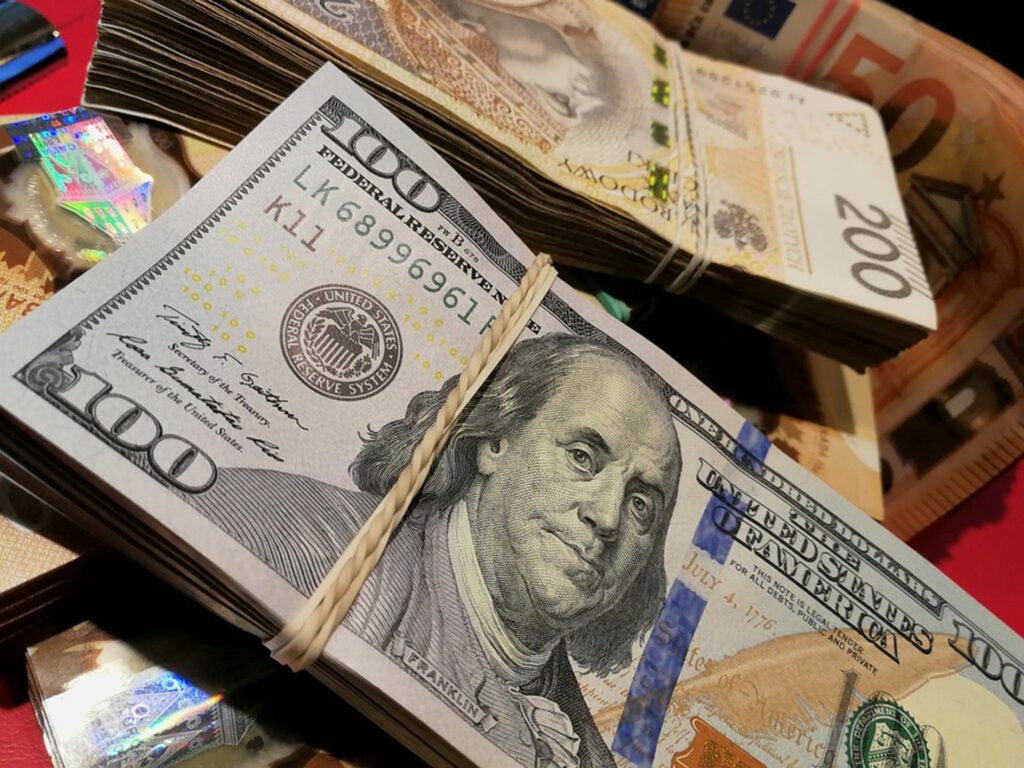Risks and opportunities of short selling CFDs
Is it more risky to short a CFD than to go long? One of the questions we have been emailed is whether it is more risky to short a CFD than to go long? And how do you short a CFD, for example, what happens to interest charges, dividends etc.? There are some traders who will feel a little unsure about shorting a financial asset using a CFD. After all, you are aiming to profit from something losing its value, which seems rather oxymoronic. In terms of the actual CFD trade and its execution, shorting with a CFD is no more risky than it is to go long with a CFD. It is highly recommended to take this risk into account before trading, given the directional nature of CFDs, but going short with a CFD will not expose you to any additional risks.
Can reduce risk with other assets
In fact, opening a short CFD position can be used to reduce risk against other assets in your trading portfolio. For example, short selling CFDs can be used as an effective hedging strategy against your long-term investments in shares. With the current financial climate behaving very volatile, this strategy may be more relevant than ever. It allows you to keep your long-term investments that you consider sound, while hedging against any short-term volatility that may well happen in the coming months. Funding a short CFD is different to opening a long position or physically holding assets such as shares, but it is not necessarily as ‘risky’. Overnight funding for a long CFD position means that a fee is charged to your account on a daily basis, based on the rate your broker uses. This is because a traditional share sale is simulated due to the short position.
The only potential problem
A dividend on a CFD is an issue that can potentially cause problems. If you hold a share CFD before the stock exchange is open and on the morning of that company’s dividend payment date, your CFD account will have seen a dividend adjustment posted to it. If you had a long CFD position, you would receive the dividend amount into your account. A short position, however, would see that amount debited from your account. This is an important thing to consider before taking any position, as you need to ensure that your account has enough funds to keep the position open. Insufficient funding can easily jeopardize a hedge strategy or any other reason to keep the position open. With the exception of dividends, opening a short position with CFDs should carry the same amount of risk as a long position. This risk is, of course, something that should never be underestimated. It is possible to lose more than your initial deposit on CFDs and in a volatile market this can happen faster than you might think. Therefore, it is important that you study the markets carefully before investing and to also consider using risk management tools from your CFD provider, such as guaranteed stops or limit orders. It would be wise to consider any CFD trade properly, whether it is a short or long position, to approach your trade with a prudent, educated approach.
The danger of bleaching
The hardest thing about stock investing is finding a loser. Consider how the odds stack up against you. First, over the past 80 years, those stocks have generated an average annual return of a little more 10 percent. Stocks turn a profit (again, on average) three out of four years. The period since 1994 is typical. Despite the bursting of the tech bubble, the 9/11 attacks, the 2001 recession, the war in Iraq and the subprime mortgage crisis, the Standard & Poor’s 500 stock index has risen. In fact, the S&P 500 in the US is a good proxy for the US market. This index rose for ten years and fell for three years. The reason is simple: the economy grows on average five to six percent a year, including inflation, and so do companies that participate in it.
Short selling is difficult because markets are efficient
Second, and more importantly, it is difficult to find a stock that is on the verge of a decline. Because markets are efficient, bad news about a company and its prospects is in almost all cases already built into the stock price. For example, Ford Motor lost $5.63 per share in the 12 months ending June 30, 2021i. That’s for a stock that trades at around $8 per share. Yet, Ford’s price has risen in the last 12 months prior. Why? Ford may be in trouble, but the outlook seems to be improving at the time of writing this article. An even better example, although further away, is the stock market in Lebanon. While the situation there may seem miserable in the here and now, investors see things improving on a forward-looking, relative scale. So even if you can identify a company (or national market) that’s rotten today, it’s far from certain that you’ll be able to make money from your insight. The company doesn’t just have to be bad; the market also has to believe it will get worse.
Look at what is popular
In fact, the best way to search for stocks that will decline is to look at what is popular, rather than what is not. The Value Line Investment Survey shows the stocks with the highest P/E ratios each week – based on the research firm’s proprietary method of calculating P/E, which includes both past earnings and forecasts. At the end of September, when the market’s P/E was 18, precious metals companies like Stillwater Mining and Agnico-Eagle Mines had P/E ratios exceeding 40. At the same time, funds specializing in natural resources were booming. For the year ended September 30, Van Eck Global Hard Assets returned 49%, and Fidelity Select Natural Resources, 53%. While a popular stock or sector must eventually come back to earth, there’s no telling when gravity will apply the brakes. The price of builder Pulte Homes doubled between 1995 and 2000, doubled again between 2000 and 2001, and tripled between 2001 and 2005, eventually reaching $40 a share. Since the beginning of 2006, however, Pulte has dropped to around $15.
Blanks
Short selling – the way to make money with a stock that you think will fall is to sell it short. It involves borrowing the stock from someone who already owns it and promising to return the shares occasionally in the future. You sell the stock today with the expectation that you will be able to buy it back at a lower price later. This is a popular strategy among professional investors, including many hedge fund managers is a long-short strategy that fits into a category called market neutral. Stockpickers find companies in a sector whose prospects are very different and invest on a relative basis (called pairs trading in the UK). You buy the good stocks (going long) and short the bad ones (selling short). The amount you make depends on how much the shares’ performance diverges. For example, you might think Motorola is a much better company than Nokia. You buy for $10,000 in Motorola and short for the same amount in Nokia. If Motorola rises 20% and Nokia falls 10%, you earn $3,000 (minus transaction costs). If both stocks fall but Motorola falls less, you also make money. The same if both stocks rise but Motorola rises more. Think of this technique as picking the winner in a horse race. You have to guess the speed. Even if the market crashes, as long as Motorola beats Nokia, you are a winner. This method is easier than finding a whole portfolio of stocks that are winners, but it’s still quite difficult – again, because stock prices tend to be efficient. For example, Motorola may be a better company to invest in than Nokia, but its valuation currently reflects that difference: with a p/e ratio of 33, while Nokia’s was 18). The example of Enron. Successful short sellers thrive by zeroing in on stocks that are misunderstood by the market – often because management is not up-to-date on the true financial condition of the companies. The classic case was the assessment of Enron by James Chanos, a short seller whose analysis in 2000 and 2001 found that the energy company’s return on capital “was a seven percent pre-tax return,” as he later told a congressional committee. Chanos was suspicious about some “related-party transactions” that Enron had reported to the Securities and Exchange Commission and about the sudden resignation of its chief executive, Jeff Skilling. A few months later, Enron executives admitted to overstating earnings and the company filed for bankruptcy protection. In a year, the stock fell from about $80 a share to less than a dollar. This game may have gotten tougher in Sarbanes-Oxley’s age because executives can face long prison sentences for fiddling the books. Still, short sellers can drive down the stock price – or try to – by spreading rumors and planting stories with friendly journalists about a company’s possible perilous state. Keep in mind that contracts for difference (CFDs) are not a suitable medium for trading in the very long term. Not only do costs increase, but if the company you are shorting acts in the same way as the market as a whole has performed for decades, its share price will rise by ten percent per year. Thus, after four years, a company that went short at a price of GBP 20 is worth about GBP 29, and you have lost about half of your investment.
About the Vikingen
With Vikingen’s signals, you have a good chance of finding the winners and selling in time. There are many securities. With Vikingen’s autopilots or tables, you can sort out the most interesting ETFs, stocks, options, warrants, funds, and so on. Vikingen is one of Sweden’s oldest equity research programs.
Click here to see what Vikingen offers: Detailed comparison – Stock market program for those who want to get even richer (vikingen.se)













